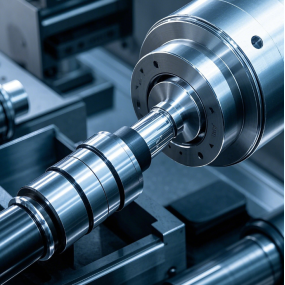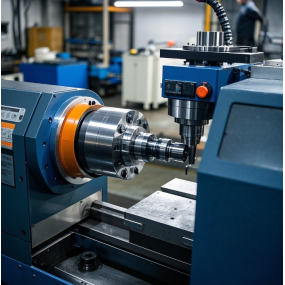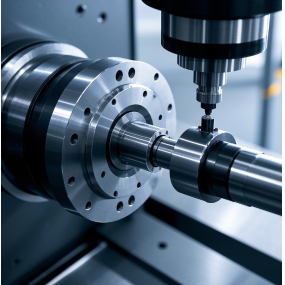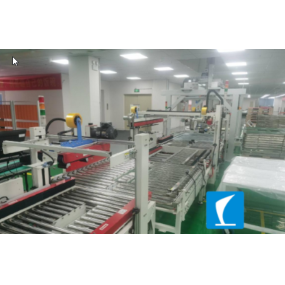1. Material Properties and Alloy Composition (1) Alloy Composition Problem: Precision Aluminum Alloy Parts Aluminum alloys with too high or too low content of certain elements may lead to cracks. For example, alloys with too high iron content or too low silicon content, the content of harmful impurities in the alloy is too high, the content of zinc or copper in the aluminum-silicon alloy is too high, and the content of magnesium in the aluminum-magnesium alloy is too high, etc., will reduce the plasticity and toughness of the alloy, thereby increasing the risk of cracks. 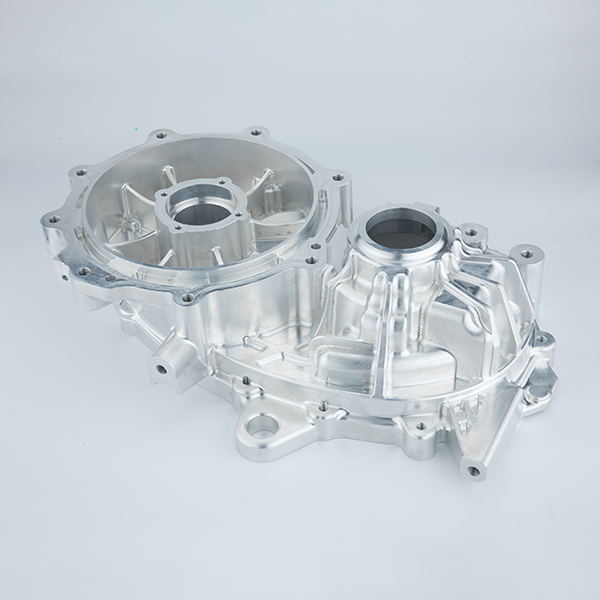 (2) Crackability of alloy materials: Some alloy steel materials themselves are prone to cracking, which is also one of the factors to be considered. II. Design and structural problems (1) Unreasonable structural design: The structural design of the casting is unreasonable. If there are sharp corners, the thickness of the wall changes too much, which will lead to shrinkage resistance and increase the possibility of cracks. The structure of the casting is not reasonable, and the shrinkage resistance casting corners are too small, which is also one of the reasons for cracks. (2) Die design problems: The temperature of the die, especially the core, is too low, which will affect the fluidity and solidification process of the metal and increase the risk of cracks. The die structure of precision aluminum alloy parts is unreasonable. If the ejection device is deflected and the force is uneven, it may also lead to cracks. III. Process and operation problems (1) Pouring and solidification process: Excessive pouring temperature of precision aluminum alloy parts will make the liquid metal fluidity too strong, easy to produce gas and oxidation inclusions. At the same time, excessive temperature will also reduce the tensile strength of the metal, thereby increasing the risk of cracks. During the solidification and cooling process, the internal cooling of the ingot will generate great unbalanced stress. If these stresses are concentrated in the weak part of the ingot, stress concentration will occur. When the stress exceeds the strength or plasticity limit of the metal, cracks will occur. Local overheating of the mold or excessive cooling speed will also lead to cracks. It should be ensured that all parts of the casting solidify at the same time or in sequence, and the design of the gating system should be improved. (2) Heat treatment process: During the heat treatment of precision aluminum alloy parts, if the temperature is too high or the cooling rate is too fast, it may also lead to stress concentration and cracks inside the metal. (3) Other process problems: The sand mold has poor concession, such as the sand core is not rounded. The high temperature at the sharp angle of the molding sand during pouring produces heat concentration, which is easy to pull and crack. The mud core bone is too large, which will hinder shrinkage and increase the risk of cracks. 4. Environmental problems (1) Environmental humidity and cleanliness: The environment with high humidity of precision aluminum alloy parts may lead to an increase in moisture in the mold, thereby increasing the risk of pores and cracks. Insufficient cleanliness of the mold or mold, such as residues, oil stains, etc., may also affect the fluidity and solidification process of the metal, increasing the risk of cracks.
(2) Crackability of alloy materials: Some alloy steel materials themselves are prone to cracking, which is also one of the factors to be considered. II. Design and structural problems (1) Unreasonable structural design: The structural design of the casting is unreasonable. If there are sharp corners, the thickness of the wall changes too much, which will lead to shrinkage resistance and increase the possibility of cracks. The structure of the casting is not reasonable, and the shrinkage resistance casting corners are too small, which is also one of the reasons for cracks. (2) Die design problems: The temperature of the die, especially the core, is too low, which will affect the fluidity and solidification process of the metal and increase the risk of cracks. The die structure of precision aluminum alloy parts is unreasonable. If the ejection device is deflected and the force is uneven, it may also lead to cracks. III. Process and operation problems (1) Pouring and solidification process: Excessive pouring temperature of precision aluminum alloy parts will make the liquid metal fluidity too strong, easy to produce gas and oxidation inclusions. At the same time, excessive temperature will also reduce the tensile strength of the metal, thereby increasing the risk of cracks. During the solidification and cooling process, the internal cooling of the ingot will generate great unbalanced stress. If these stresses are concentrated in the weak part of the ingot, stress concentration will occur. When the stress exceeds the strength or plasticity limit of the metal, cracks will occur. Local overheating of the mold or excessive cooling speed will also lead to cracks. It should be ensured that all parts of the casting solidify at the same time or in sequence, and the design of the gating system should be improved. (2) Heat treatment process: During the heat treatment of precision aluminum alloy parts, if the temperature is too high or the cooling rate is too fast, it may also lead to stress concentration and cracks inside the metal. (3) Other process problems: The sand mold has poor concession, such as the sand core is not rounded. The high temperature at the sharp angle of the molding sand during pouring produces heat concentration, which is easy to pull and crack. The mud core bone is too large, which will hinder shrinkage and increase the risk of cracks. 4. Environmental problems (1) Environmental humidity and cleanliness: The environment with high humidity of precision aluminum alloy parts may lead to an increase in moisture in the mold, thereby increasing the risk of pores and cracks. Insufficient cleanliness of the mold or mold, such as residues, oil stains, etc., may also affect the fluidity and solidification process of the metal, increasing the risk of cracks.
Hello! Welcome to EMAR's website!
 English
English » »
» »
 Spanish
Spanish Arabic
Arabic Spanish Basque
Spanish Basque Portuguese
Portuguese Belarusian
Belarusian Japanese
Japanese Russian
Russian Icelandic
Icelandic Bulgarian
Bulgarian Azerbaijani
Azerbaijani Estonian
Estonian Irish
Irish Polish
Polish Persian
Persian Boolean
Boolean Danish
Danish German
German French
French Filipino
Filipino Finnish
Finnish Korean
Korean Dutch
Dutch Galician
Galician Catalan
Catalan Czech
Czech Croatian
Croatian Latin
Latin Latvian
Latvian Romanian
Romanian Maltese
Maltese Malay
Malay Macedonian
Macedonian Norwegian
Norwegian Swedish
Swedish Serbian
Serbian Slovak
Slovak Slovenian
Slovenian Swahili
Swahili Thai
Thai Turkish
Turkish Welsh
Welsh Urdu
Urdu Ukrainian
Ukrainian Greek
Greek Hungarian
Hungarian Italian
Italian Yiddish
Yiddish Indonesian
Indonesian Vietnamese
Vietnamese 简体中文
简体中文 Haitian Creole
Haitian Creole


